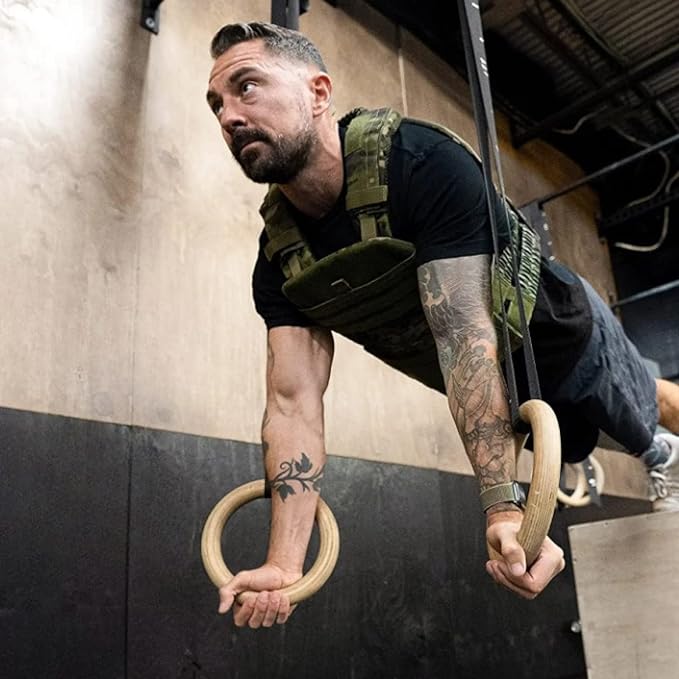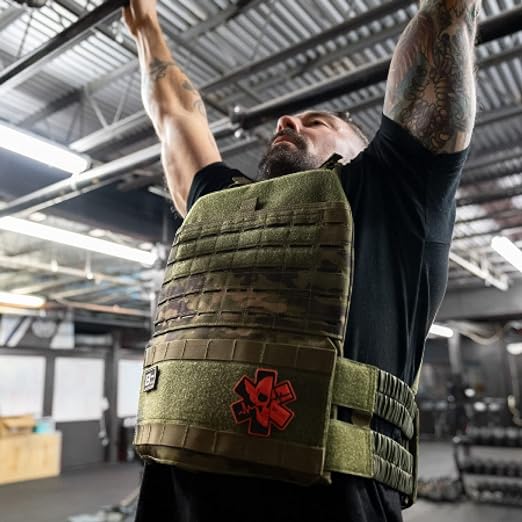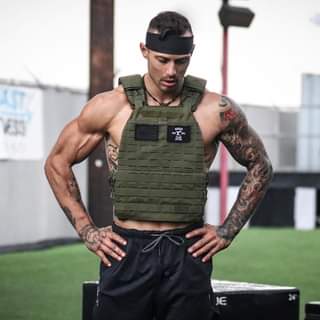In the realm of fitness, safety should always be a top priority. When it comes to incorporating weighted vests into your workout routine, maintaining proper form and preventing injuries are essential considerations. Weighted vests can significantly enhance your workouts, but without careful attention to safety precautions, they can also increase the risk of strains, sprains, and other injuries. In this guide, we'll delve into the importance of proper form and injury prevention when using weighted vests, providing you with valuable tips to ensure a safe and effective workout experience. Whether you're a seasoned athlete or new to weighted vest training, these guidelines will help you maximise the benefits while minimising the risks associated with this versatile fitness tool. Let's dive in!
What exactly is a weighted vest?
Weighted vests come in various designs and styles, but they all share the common goal of adding resistance to your workouts. Some vests feature adjustable straps and buckles, allowing you to customise the fit for maximum comfort and stability during exercise. Additionally, many modern weighted vests are crafted from breathable and moisture-wicking materials, ensuring that you stay cool and comfortable even during intense workouts. Whether you're performing bodyweight exercises, strength training, or cardiovascular activities, a weighted vest can provide an added challenge to help you push past plateaus and reach your fitness goals.
How does wearing a weighted vest affect your workout?
By adding extra weight to your body, a weighted vest increases the intensity of your exercises, forcing your muscles to work harder. This leads to greater strength gains, improved endurance, and enhanced calorie burn during your workouts.
Wearing a weighted vest can also improve proprioception and body awareness as it alters your center of gravity. This increased awareness can help enhance balance and stability, which are crucial for performing exercises safely and effectively. Moreover, the added resistance provided by the vest encourages proper muscle engagement throughout each movement, leading to more efficient and targeted workouts. As a result, incorporating a right weighted vest into your training regimen can yield not only physical benefits but also improvements in overall body control and coordination.
Benefits of Incorporating Weighted Vests Into Your Fitness Routine
Incorporating weighted vests into your fitness routine offers a myriad of benefits that can elevate your workouts to new heights. Let's explore some of the key advantages:
Strengthening Your Muscles
Weighted vests are excellent tools for resistance training, allowing you to add extra resistance to bodyweight exercises such as squats, push-ups, and lunges. This increased resistance forces your muscles to work harder, leading to greater muscle activation and hypertrophy. As a result, incorporating weighted vests into your strength training routine can help you build lean muscle mass and develop functional strength that translates to improved performance in various activities and sports.
Boosting Cardiovascular Endurance
In addition to strength training, weighted vests can also be used to enhance cardiovascular workouts such as running, walking, or hiking. By adding extra weight to your body, weighted vests increase the intensity of these exercises, leading to a higher heart rate and greater calorie burn. Over time, this can improve cardiovascular endurance and stamina, allowing you to push your limits and achieve new fitness milestones.
Enhancing Bone Density
Weight-bearing exercises are essential for maintaining and improving bone density, especially as we age. Research has shown that wearing a weighted vest during weight-bearing activities can help stimulate bone growth and prevent bone loss, reducing the risk of osteoporosis and fractures. By incorporating weighted vests into your fitness routine, you can strengthen your bones and support overall skeletal health.
Improving Balance and Stability
Wearing a weighted vest alters your center of gravity, challenging your balance and stability during exercises. As a result, your core muscles, as well as smaller stabilising muscles throughout your body, are forced to engage to maintain proper alignment and control. Over time, this can lead to improved balance, stability, and coordination, reducing the risk of falls and injuries both in and out of the gym.
Increasing Caloric Expenditure
One of the most immediate benefits of using a weighted vest is the increase in caloric expenditure during workouts. By adding extra weight to your body, you effectively increase the energy demand of each exercise, leading to a higher calorie burn. This can be particularly beneficial for individuals looking to lose weight or maintain a healthy body composition, as it allows them to maximize the efficiency of their workouts and achieve their fitness goals more effectively.
Incorporating weighted vests into your fitness routine can significantly enhance your workouts and provide a wide range of benefits for your overall health and wellness. Whether you're looking to build muscle, improve cardiovascular endurance, or support bone health, weighted vests offer a versatile and effective tool for achieving your fitness goals.
How to Safely Use a Weighted Vest?
When it comes to safely using a weighted vest, there are several precautions you should keep in mind to minimize the risk of injury and maximize the effectiveness of your workouts.
1.Proper Weight Selection
Selecting the right weight for your vest is crucial to ensure a safe and effective workout. Start with a weight that feels challenging but manageable for your current fitness level. A good rule of thumb is to choose a weight that allows you to maintain proper form throughout your exercises. As you become stronger and more accustomed to the added resistance, gradually increase the weight to continue challenging your muscles.
2.Gradual Progression
One of the most common mistakes people make when using a weighted vest is trying to lift too much weight too soon. Instead, focus on gradually increasing the load over time. This gradual progression allows your muscles, joints, and connective tissues to adapt to the increased resistance, reducing the risk of overuse injuries.
3.Proper Form
Maintaining proper form is essential when using a weighted vest to prevent injuries and maximize the effectiveness of your exercises. Pay close attention to your posture and alignment during movements, ensuring that your movements are controlled and deliberate. If you find that your form is starting to suffer as you fatigue, consider reducing the weight or taking a break to rest and recover.
4.Avoiding High-Impact Activities
While weighted vests can be beneficial for a wide range of exercises, there are certain activities that may not be suitable for wearing a weighted vest. Exercises that involve sudden or jerky movements, such as sprinting, jumping, or plyometrics, can increase the risk of injury when wearing a weighted vest. Instead, focus on controlled, low-impact movements that allow you to maintain proper form and control throughout the exercise.
5.Listening to Your Body
Above all, listen to your body and pay attention to how it responds to wearing a weighted vest. If you experience any pain, discomfort, or unusual sensations during your workouts, stop immediately and assess the situation. It's better to err on the side of caution and take a break than to push through pain and risk injury.
By following these precautions and guidelines, you can safely incorporate a weighted vest into your workout routine and reap the many benefits it has to offer. Remember to start slow, gradually increase the weight and intensity of your workouts, and always prioritize proper form and technique to minimize the risk of injury and achieve optimal results.
What precautions should you take when using a weighted vest?
It's essential to start with a weight that is appropriate for your fitness level and gradually increase the load as you become stronger. Maintaining proper form during exercises is crucial to reduce the risk of injury when wearing a weighted vest.
Furthermore, it's important to listen to your body and pay attention to any signs of discomfort or strain while wearing a weighted vest. If you experience pain or excessive fatigue during your workouts, it's essential to take a step back and reassess your approach. Additionally, be mindful of the duration and frequency of your weighted vest workouts, as overtraining can increase the risk of injury. By taking these precautions and listening to your body's signals, you can enjoy the benefits of weighted vest training safely and effectively, minimizing the risk of injury and maximizing your fitness gains.
Are there any activities where using a weighted vest is not recommended?
While weighted vests can be beneficial for most exercises, it's important to avoid activities that place excessive strain on the joints, such as high-impact jumping or rapid changes in direction, may not be suitable for weighted vest use. These movements can place added stress on the knees, ankles, and hips, increasing the risk of injury, especially if proper form and technique are not maintained. It's essential to listen to your body and exercise caution when incorporating a weighted vest into your routine, ensuring that you choose exercises that allow for controlled, smooth movements and minimize the risk of strain or injury.
Choosing the Right Weighted Vest for Your Needs
Selecting the right weighted vest is essential for maximizing the effectiveness of your workouts while minimizing the risk of injury. When determining the appropriate weight for your vest, it's crucial to strike a balance between adding resistance and maintaining proper form. As a general guideline, choose a weight that challenges you without compromising your technique or causing excessive strain on your muscles and joints. Starting with a lighter weight allows you to focus on mastering proper form and gradually increasing the load as your strength and fitness level improve.
In addition to weight selection, there are several other factors to consider when choosing a weighted vest. Comfort is paramount, as you'll likely be wearing the vest for extended periods during your workouts. Look for a vest with padded shoulder straps and breathable materials to ensure a comfortable fit that won't chafe or restrict your movement.
Adjustability is another important consideration, as it allows you to customize the fit of the vest to your body shape and size. Look for vests with adjustable straps or fastenings that allow you to tighten or loosen the vest as needed for a secure and comfortable fit.
The distribution of weight is also crucial for ensuring a balanced and effective workout. Ideally, the weight should be evenly distributed throughout the vest to prevent any imbalances or discomfort during exercise. Some vests feature removable weight packets or adjustable weight options, allowing you to customize the distribution of weight to suit your preferences and workout goals.
Finally, consider any additional features or functionalities that may enhance your workout experience. This could include features such as pockets for storing small items like keys or a phone, reflective elements for added visibility during outdoor workouts, or compatibility with hydration systems for convenient access to water during long training sessions.
By taking these factors into account and carefully selecting a weighted vest that meets your needs and preferences, you can enhance the effectiveness of your workouts and achieve your fitness goals safely and efficiently.
Conclusion
In conclusion, safety should always be a top priority in any fitness endeavor, and incorporating weighted vests into your workout routine is no exception. By maintaining proper form and following safety precautions, you can enjoy the many benefits of weighted vest training while minimizing the risk of injury. Whether you're looking to build muscle, improve cardiovascular endurance, or support bone health, weighted vests offer a versatile and effective tool for achieving your fitness goals.
Proper weight selection, gradual progression, and attention to form are essential when using a weighted vest to ensure a safe and effective workout. Additionally, it's important to avoid high-impact activities and listen to your body's signals to prevent overuse injuries and excessive strain. By choosing the right weighted vest for your needs and preferences, you can enhance the effectiveness of your workouts and achieve optimal results.
Overall, incorporating weighted vests into your fitness routine can significantly elevate your workouts and provide a wide range of benefits for your overall health and wellness. With careful attention to safety and proper technique, you can safely reap the rewards of weighted vest training and take your fitness journey to new heights.










